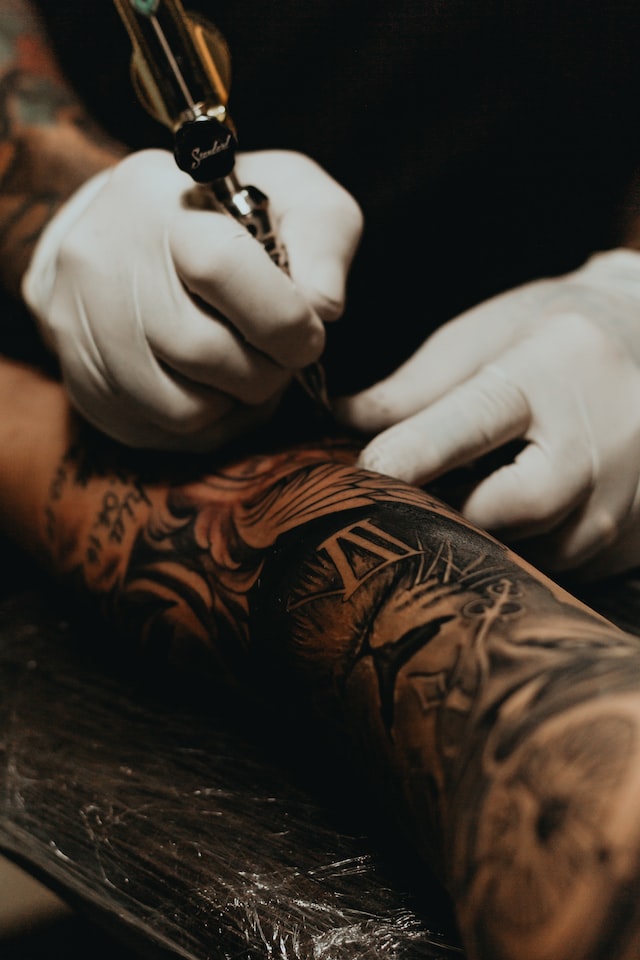Remember Ed Helms’ face tattoo from “The Hangover Part II” movie? Did you notice the resemblance between the tattoo featured in the film and Mike Tyson’s face tattoo? Well, Warner Bros. may not have gotten permission to use that tattoo from artist S. Victor Whitmill who designed Tyson’s famous tattoo.
Before the movie’s release, Whitmill filed a complaint against Warner Bros., alleging that the facial tattoo in the film infringed on Whitmill’s copyright in the tattoo. Whitmill sought a preliminary injunction, which would have halted the film’s release. A preliminary injunction is a pre-trial court order that stops action by the opposing party in a lawsuit.
Warner Bros. and Whitmill settled this case before trial, and Whitmill’s tattoo is featured in the movie on all platforms. This case is still helpful to discuss because many athletes have unique tattoos that companies would want to display in their films or commercials, so the artist should also be able to profit from it.

Photo by Allef Vinicius, licensed
by Unsplash
An Epic Faceoff
Copyright protects original works of authorship as soon as an author fixes the work in a tangible form of expression. Originality requires that the author did not copy the work. It must be independently created and have a minimal degree of creativity. A work is fixed when expressed in a sufficiently permanent copy to permit it to be perceived, reproduced, or communicated for more than a brief period. A work is fixed when you write it down or record it such as a short story that is printed on paper.
Once you create an original work and fix it, you are the author and the copyright owner. Through “works made for hire,” companies, organizations, and others besides the work’s creator can also be copyright owners. Works made for hire include works created by an employee within the scope of employment.
Section 106 of the Copyright Act grants copyright owners exclusive rights. These rights include the owner’s right to reproduce copies and prepare derivative works. A derivative work is a work based on an already existing work. In this case, Whitmill has the exclusive right to make a copy of the tattoo and the right to create derivative works.
Copyright infringement occurs when a copyrighted work is reproduced, distributed, performed, publicly displayed, or made into a derivative work without the copyright owner’s permission. This case was settled before trial, so we don’t know how the judge would’ve ruled on Whitmill’s copyright infringement claim. Since there was no express permission from Whitmill to use the tattoo, the issue is if Warner Bros. has a viable fair use defense.

Photo by Metin Ozer, licensed
by Unsplash
An Un-Fair Use
Fair use is a defense against copyright infringement that allows a party to use a copyrighted work without the copyright owner’s permission. Four factors must be considered in deciding whether there is fair use.
First, the purpose and character of the use focuses on whether the alleged infringing use is commercial or non-commercial and whether the use is transformative. Commercial use is less likely to be fair use since it seeks to profit off the work – unless the use of the work is transformative or the defendant has transformative work. Transformative works/uses add something new with a different purpose and do not substitute for the original use of the work.
An example of transformative work is “Pretty Woman” by 2Live Crew, which mimicked the melody of Roy Orbison’s “Oh Pretty Woman.” Although both songs sounded very similar, 2Live Crew created new lyrics to parody the original. An example of transformative use is legal databases such as Westlaw and Lexis incorporating legal briefs into their databases. The purpose of using the briefs as research tools is differs from using the briefs to assist clients. A transformative work/use is more likely to be fair use even if the transformative work is commercial. A transformative work/use plays a significant role in the second and third factors.
Second, the nature of the copyrighted work considers whether it is more creative or factual. A highly creative work is less likely to be fair use. But a transformative work/use may support a fair use claim even if the copyrighted work is highly creative.
Third, the amount used considers how much of the copyrighted work the infringer used compared to the copyrighted work as a whole. Using a small portion of the copyrighted work will often favor fair use. This also considers if the portion used was the “heart” of the work, the most important aspects. Taking the heart of the work would likely weigh against fair use, even if only a tiny amount was used.
Finally, if the use harms the copyright owner’s current or potential market, it will weigh against fair use. When considering the actual market, the courts look to see if the allegedly infringing work would supplant the original. For instance, would people watch the movie with the tattoo instead of getting their own? For the potential market, courts look to see if the copyright owner might want to enter the market, such as licensing the tattoo design for other uses, such as in movies.
Was it Fair or Foul
There is commercial use in that Warner Bros. uses the tattoo in the Hangover movie. Warner Bros. doesn’t have a transformative work/use. Whitmill’s and Warner Bros. use the tattoo for aesthetic purposes. Warner Bros. didn’t add something new to the tattoo and didn’t use the tattoo for a purpose different from Whitmill’s.
Whitmill’s tattoo is highly creative. Few tattoos look like it. Since it’s unlikely that Warner Bros. has a transformative work/use, this would also weigh against fair use. Even if Warner Bros. had a transformative use in the tattoo, it might not be enough to tilt this factor in their favor. Warner Bros. didn’t need to take this face tattoo to entertain people watching the movie because any other tattoo would most likely have the same effect.
Usually, when evaluating the amount and substantiality taken, we’d look at the quantity (i.e., how much was taken) and quality (i.e., the heart of the work). However, where Warner Bros. took a significant amount of the copyrightable material, this will weigh against fair use. Since Warner Bros.’ lacks a transformative work/use, this factor also disfavors fair use. Assuming Warner Bros. had a transformative use, I don’t think it would be enough to tilt this factor in its favor. Warner Bros. didn’t need to use Tyson’s tattoo if their purpose was to have Ed Helms wake up from his hangover with a face tattoo. Any face tattoo would’ve had the audience laughing, especially since this is an R-rated movie.
I don’t think this affects Whitmill’s actual market in the tattoo because it’s unlikely that the movie with the tattoo would supplant the original. Because Warner Bros. is making an unauthorized derivative of Whitmill’s tattoo, this would affect Whitmill’s ability to profit from the design. Warner Bros. denies Whitmill the ability to grant them a license to feature his tattoo in their movie.

Photo by GR Stocks, licensed
by Unsplash
A Fair Shake
Since the factors weigh heavily against Warner Bros., their fair use defense would have probably failed in court and may be why Warner Bros. agreed to modify the tattoo before the movie was released.
Using this case as an example, having a transformative work/use can dramatically sway the fair use factors. For the amount used, copying the entire copyrighted work is allowed if the transformative work/use requires it. In these cases, the best option is to get permission from the artist to display the design. But if you won’t get authorization to use the copyrighted work, at least try to transform the work and do something different. I think that’s a
fair deal.

Jean Joseph
Associate Blogger
Loyola University Chicago School of Law, J.D. 2024
